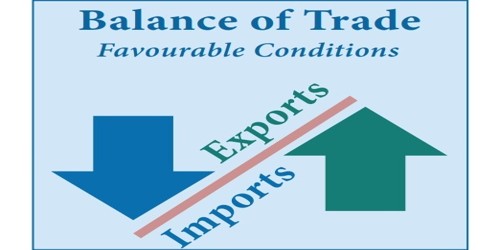
Forex trading presents lucrative opportunities, yet it also involves substantial risks. As the largest financial market in the world, trading currencies can lead to substantial profits but can also result in significant losses if not managed correctly. Effective risk management is crucial for traders looking to protect their capital and ensure long-term success.
1. Understanding Forex Risk Management
1.1 What is Risk Management?
Risk management involves identifying, assessing, and prioritizing risks followed by coordinated efforts to minimize, monitor, and control the probability of unfortunate events. In trading, risk management aims to protect an investor's capital while allowing for opportunities to grow that capital.
1.2 Importance of Risk Management in Forex Trading
Forex trading is characterized by high volatility and the potential for rapid price movements. Therefore, having robust risk management strategies in place is essential. Efficient risk management enables traders to:
- Preserve their capital during losing trades.
- Maximize profitability while maintaining acceptable risk levels.
- Develop a disciplined trading approach that focuses on long-term success.
2. Common Forex Risks

Understanding the different types of risks in forex trading is crucial for developing effective management strategies.
2.1 Market Risk
Market risk refers to the possibility of incurring losses due to unfavorable changes in market prices. In the forex market, prices can be influenced by a wide range of factors, including economic data releases, geopolitical events, and changes in market sentiment.
2.2 Leverage Risk
Leverage allows traders to control larger positions with relatively smaller amounts of capital. While leverage can amplify profits, it also significantly increases the potential for loss. This heightened risk is one of the primary dangers in forex trading.
2.3 Interest Rate Risk
Changes in interest rates can impact currency values. When central banks alter interest rates, it can lead to rapid shifts in exchange rates that traders must navigate. Understanding interest rate policy and its implications is vital for managing this risk.
2.4 Political and Economic Risk
Political events, economic instability, or changes in government policy can introduce uncertainty in the forex market. Traders should be aware of the economic and political landscape influencing the currencies they trade.
3. Best Forex Risk Management Techniques
Effective risk management techniques are essential to safeguard your trading capital. Below are some of the best practices to consider.
3.1 Determine Risk Tolerance
Before engaging in forex trading, it is essential to assess your risk tolerance. This refers to the level of risk you are comfortable taking in pursuit of your trading goals. Factors influencing risk tolerance may include your financial situation, trading experience, and investment objectives.
- Establish a Risk Profile: Take time to define how much you are willing to risk on any given trade. A common guideline is to never risk more than one to two percent of your trading capital on a single trade.
3.2 Use Stop-Loss Orders
Stop-loss orders are essential risk management tools that help traders limit potential losses. A stop-loss order automatically closes a trade when the market price reaches a specified level, preventing further losses.
- Setting Stop-Loss Orders: When placing a trade, determine your stop-loss level based on your analysis and risk tolerance. For example, if you enter a long trade on a currency pair, set a stop-loss just below the nearest support level to minimize potential losses.
3.3 Implement Take-Profit Orders
Take-profit orders are designed to lock in profits by automatically closing a trade when the price reaches a predetermined level. This technique can help traders secure gains without needing to constantly monitor the market.
- Determining Take-Profit Levels: Analyze price action and historical price levels to establish realistic take-profit targets. Consider using resistance levels as potential take-profit points when you are in a long position.
3.4 Proper Position Sizing
Position sizing involves determining the appropriate size of your trade based on your account balance and risk tolerance. Properly sizing your position is critical for managing risk and ensuring that losses remain within acceptable limits.
- Calculating Position Size: Use position sizing formulas to calculate the number of lots to trade based on your risk parameters. For instance, if you risk two percent of a ten-thousand-dollar account on a trade and set a stop-loss at twenty pips, you would calculate the position size accordingly to maintain your risk threshold.
3.5 Diversification
Diversification involves spreading your investments across various assets to reduce risk exposure. In forex trading, this can mean trading different currency pairs that are not directly correlated.
- Benefits of Diversification: By diversifying your trades, you can mitigate the impact of adverse movements in any single currency pair. This approach helps to create a more balanced risk profile for your portfolio.
3.6 Regularly Review and Adapt Your Strategy
The forex market is dynamic, and changes in market conditions can affect the performance of your trading strategy. Regularly reviewing and adapting your strategy ensures that you remain relevant and competent.
- Continuous Improvement: Keep a trading journal to track your performance and analyze your decisions. Use this information to adjust your strategies as needed and learn from both successes and failures.
4. Developing an Effective Risk Management Plan

Creating a well-defined risk management plan is vital for successful forex trading.
4.1 Setting Clear Objectives
Before trading, establish clear and measurable objectives. Your goals may vary depending on your experience level, trading style, and risk appetite.
- Short-Term vs. Long-Term Goals: Decide whether your focus will be on short-term profits, long-term capital growth, or a combination of both. This determination will influence your risk management approach.
4.2 Assessing Market Conditions
Market conditions can impact your trading decisions and risk exposure. Regularly monitor economic indicators and geopolitical developments that may affect the forex market.
- Stay Informed: Keep abreast of market news through financial news outlets and economic calendars. Understanding current events will help you make informed trading decisions.
4.3 Incorporating Economic Indicators
Economic indicators such as GDP growth, employment rates, and inflation figures influence currency movements. Incorporating these indicators into your trading strategy enhances your risk management effectiveness.
- Economic Calendar: Use an economic calendar to stay updated on upcoming releases that could cause volatility in the currencies you trade.
5. Psychological Aspects of Risk Management
Psychology plays a significant role in trading success. Understanding and managing your emotions is crucial for effective risk management.
5.1 Managing Emotions
Emotions such as fear and greed can cloud judgment and lead to poor decision-making. Developing emotional discipline is essential for maintaining a successful trading approach.
- Recognize Triggers: Identify emotional triggers that lead to impulsive trading decisions. Being aware of these triggers allows you to take proactive measures to manage them.
5.2 Discipline and Patience
Discipline is fundamental to following your trading plan and adhering to your risk management strategies. Successful traders exhibit patience, waiting for the right trading opportunities without succumbing to the temptation to enter trades prematurely.
- Stay Focused on Your Plan: Stick to your strategy, as deviating from it can undermine your risk management approach.
6. Advanced Risk Management Techniques

For traders looking to refine their risk management strategies further, here are some advanced techniques.
6.1 Hedging Strategies
Hedging involves taking positions that offset potential losses in your primary trading strategy. This technique helps to protect your capital during unfavorable market conditions.
- Types of Hedging: Consider using currency options or futures contracts to hedge your forex positions, reducing exposure to adverse market movements.
6.2 Correlation Analysis
Correlation analysis helps traders understand the relationship between different currency pairs. By identifying correlated pairs, you can adjust your exposure to risk.
- Positive and Negative Correlation: Currency pairs that tend to move in the same direction are positively correlated, while those moving in opposite directions are negatively correlated. Use this information to diversify your trading strategy effectively.
6.3 Using Options for Risk Management
Options provide traders with a versatile tool for managing risk. By purchasing options, you can limit potential losses on forex positions without needing to sell existing trades.
- Buying Put Options: If you hold a long position in a currency pair, buying a put option can provide protection against potential declines in the currency's value.
7. Conclusion
Effective risk management techniques are vital for success in forex trading. By understanding the risks involved and implementing sound strategies, traders can protect their capital and improve their chances of long-term profitability. From determining risk tolerance and using stop-loss orders to diversifying investments and addressing psychological challenges, a well-rounded approach will enhance your trading experience.
Continuous education, monitoring market conditions, and adapting strategies are essential components of an effective risk management plan. Remember, successful forex trading is not just about making profits; it is also about preserving your capital to trade another day.
Related
-
Financial News

-
Cryptocurrency

-

-
Forex Market

-
Economic Indicators

-
Forex Market

